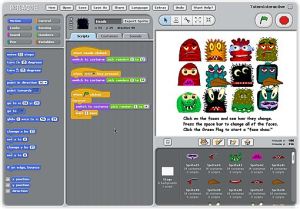 Keynote Session — Wednesday, July 14th
Keynote Session — Wednesday, July 14th
We arrived on the 6:02 a.m. train from Concord and made it to the Boston Park Plaza Hotel right at 7:00 a.m. The huge Imperial Ballroom was initially pretty empty and five of our group quickly saved seats for the 20-member Concord delegation. I quickly noticed that there are people here from all over the world. The drawls from those down south intermingle with our Bostonian accents. By the time 8:00 a.m. rolled around, the room was a sea of iPods, iPads, laptops, net books, and “Droids”. I turned to a friend and said “this is the perfect nerdy girl/boy event!” My goal for the two days of attending BLC1o was to learn as many new “chores” for my Digital Learning Farm as possible. Let the learning begin!
Alan November was first up. He said that the first BLC party started with 25 people who were carrying books and file folders. Some of his comments included “There seems to be no limits to our dreams. The only boundary is our imagination.” “Now students publish for a world audience.” He then introduced the keynote speaker, Mitch Resnick of the MIT Media Lab. The following are some of his thoughts that he discussed from his presentation: Scratch-Creating Creative Communities. Risk takers doers and makers of things need our students to be this. How can we help the students become makers of things in the digital world? We need people to be creative thinkers. Young people are comfortable with technology. but beyond texting and Facebook but they need to design create and invent. Can play games but not create their own games, best learning happens as part of a community. Scratch is about that. With Scratch you can collaborate with kids all over the world. Scratch software can be downloaded for free. Scratch starts with simple blocks like legos. Kids can create interactive stories and games. Can upload scratch projects like you tube. In the Scratch community it is an honor for people to be building on your project. Everyone can be a creator in Scratch. Make anemone come to life. Kids make use of Scratch community to share knowledge of how to do things. Scratch now being used more and more. Layers of the earth a guided tour with Scratch. Community can be many different things. Make and create and share and collaborate. Book reports use Scratch. Literature math and art combined. Field trips use. Math probability test flipping coin overnight. Active shakers not passive users of technology. Technology should have a low floor but a high ceiling and wide walls. Technology needs to connect to a broad range of users. Scratch think systematically but creatively. Intensity of ownership. New robotics kit WeDo. Think creatively. Reason systematically. Work collaboratively. Think about your life in a new way. Computational. Thinking connected with ways you interact with computers. Hanging out, messing around, geeking out. ScratchEd site for teachers. Scratch Day make your own scratch events.
Some of the ideas that I was “scratching” down for my own classroom include trying a tour with layers of the atmosphere. Culture of China could be another application in my classroom. Ecosystems where students create their own. I had done this project years ago and thought this might be a really cool one to pull out of the archives and digitalize. Another thought that a colleague and I brainstormed was to start the year off and have homework assignments to build on. Students who wanted to fly with it could.
By 10:00 a.m., my head was simply buzzing and I was clamoring for more great tools to use with my students. However, my thought of using my iPod touch to type on was not going to work well since the battery had drained down considerably. The old laptop would be coming along on Thursday. Those new iPads looked really great though!

